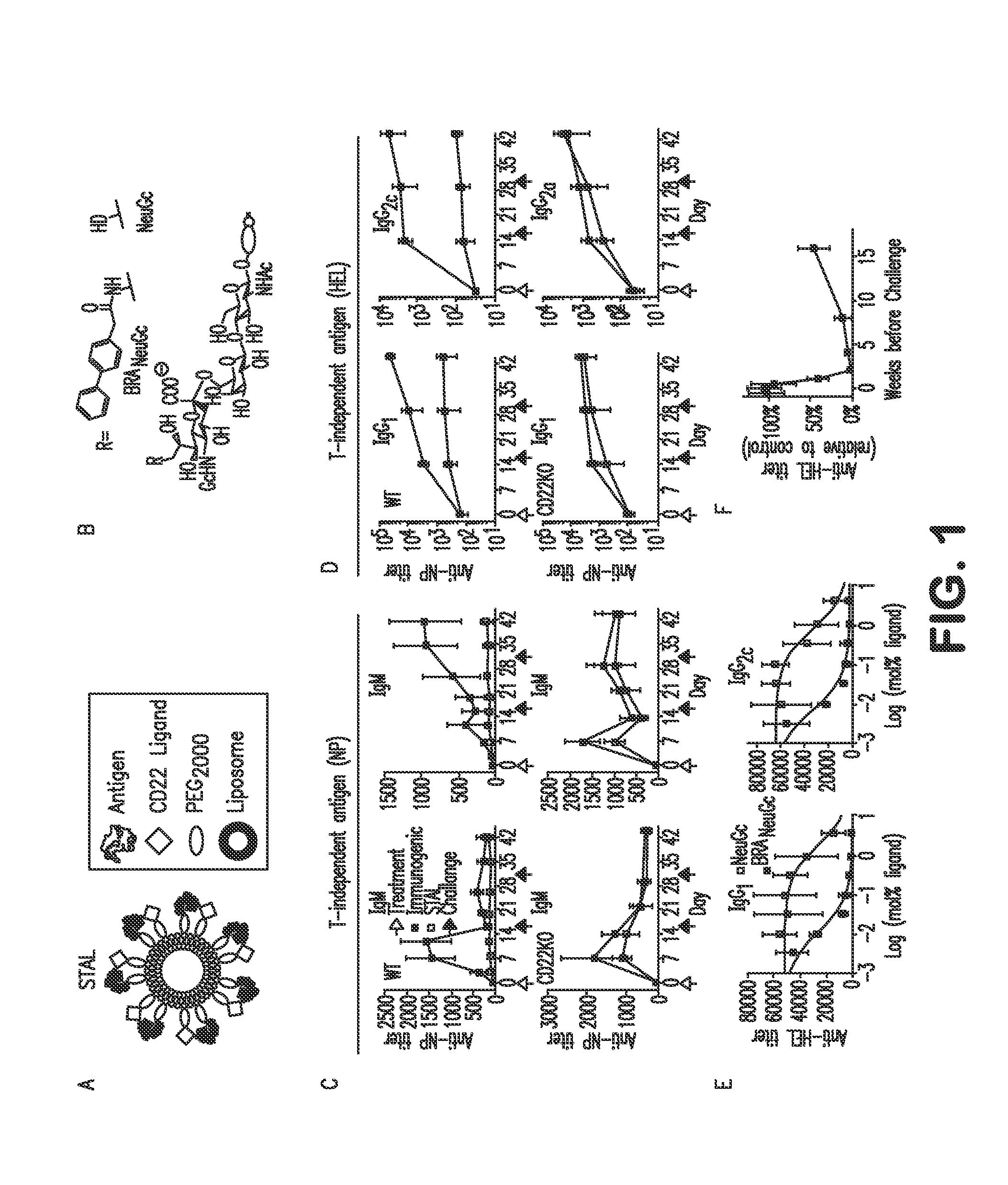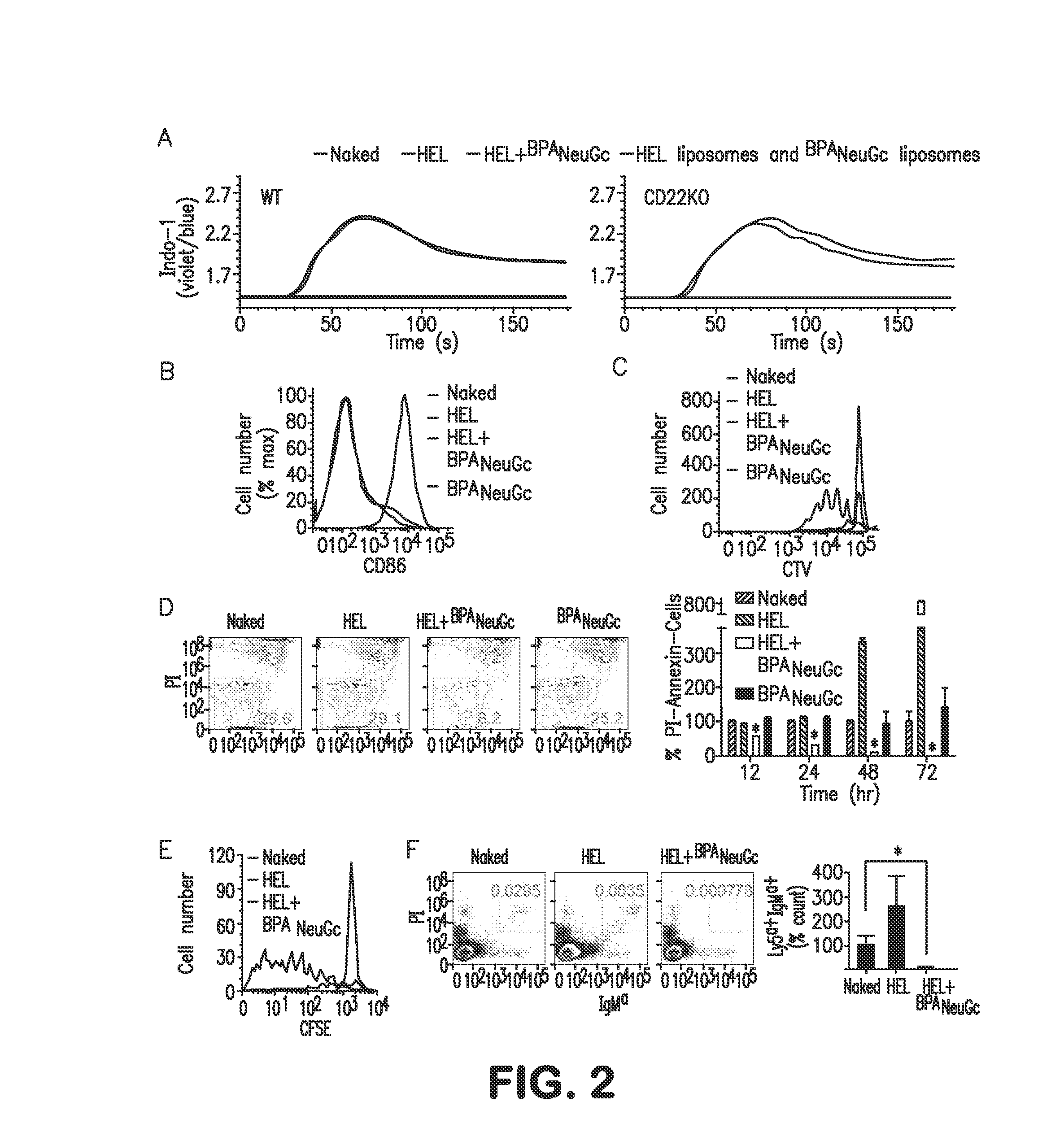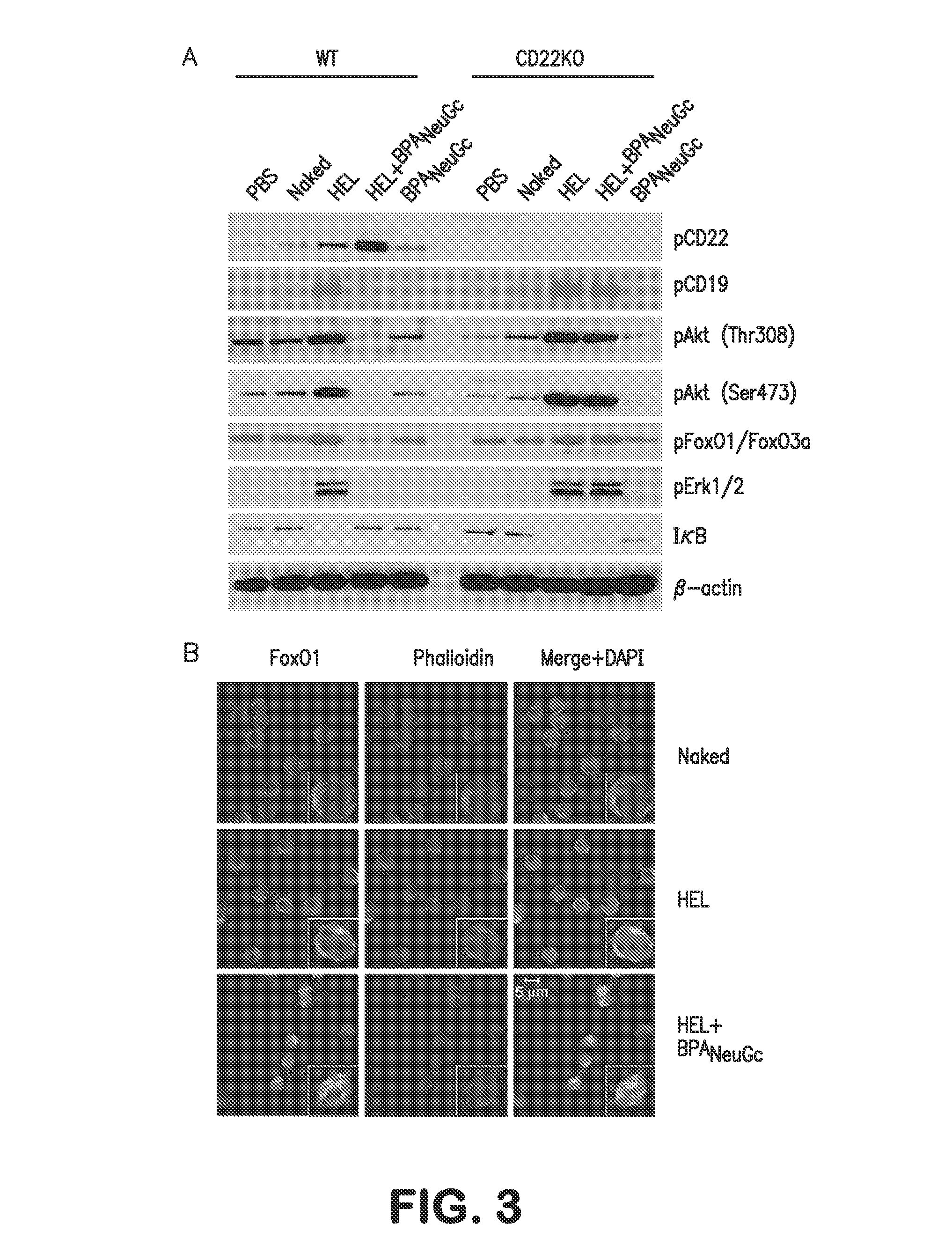Methods and Compositions for Treating Bleeding Disorders
a technology for b-cells and compositions, applied in the direction of immunoglobulins, peptides/protein ingredients, peptides/protein ingredients, etc., can solve the problems of compromise immunity, lack of direct tolerating b-cells in an antigen-specific manner, and the most serious complication of inhibitors
- Summary
- Abstract
- Description
- Claims
- Application Information
AI Technical Summary
Benefits of technology
Problems solved by technology
Method used
Image
Examples
example 1
Toleragenic Liposomes with Siglec Ligands
[0067]Liposomal nanoparticles were selected as a platform for enforced ligation of CD22 to the BCR because of their validated in vivo use and the robust methods that exist for covalently linking proteins and glycan ligands to lipids for incorporation into the membrane. Accordingly, Siglec-engaging tolerance-inducing antigenic liposomes (STAL) were constructed that display both CD22 ligand and antigen (FIG. 1A). The effects of STALs were compared to liposomes displaying antigen alone (immunogenic liposomes). For initial studies, we used a high affinity Siglec ligand, BPANeuGc (BPANeuGcα2-6Galβ1-4GlcNAc; FIG. 1B), which binds to murine CD22 with 200-fold higher affinity than its natural ligand, (NeuGcα2-6Galβ1-4GlcNAc; FIG. 1B), and has only a small degree of cross-reactivity with Siglec-G.
[0068]This platform was initially validated using the T-independent antigen nitrophenol (NP) to compare with previous results using a polyacrylamide polymer....
example 2
STALs Induce Apoptosis of Antigen-Reactive B-Cells
[0070]The mechanism of tolerance induction was investigated using transgenic HEL-reactive (IgMHEL) B-cells from MD4 mice. STALs completely abrogated in vitro activation of IgMHEL B-cells, as judged by calcium flux, CD86 upregulation, and proliferation (FIG. 2A-C). Suppressed activation was CD22-dependent as shown with IgMHEL B-cells on a CD22KO background (FIG. 2A). Inhibition required presentation of both ligand and antigen on the same liposome since a mixture of liposomes displaying either CD22 ligand or antigen alone resulted in no inhibition (FIG. 2A). In proliferation assays (FIG. 2C), we noticed that cells treated with the STALs decreased in number relative to unstimulated cells. Analysis of percent live cells (AnnexinV−PI−) revealed a time-dependent decrease in this population (FIG. 2D). Culturing cells with anti-CD40, to mimic T cell help, slowed down but did not prevent cell death. It is noteworthy that liposomes displaying ...
example 3
Impact of STALs on BCR Signaling
[0072]BCR signaling in IgMHEL B-cells was analyzed by assessing the phosphorylation status of signaling components by Western blotting at several time points after stimulation with liposomes (FIG. 3A). STALs gave rise to strong CD22 phosphorylation on all four ITIMs analyzed, which is consistent with physical tethering of CD22 and the BCR within the immunological synapse. Conversely, phosphorylation of numerous proximal (Syk and CD19) and distal (p38, Erk, JNK, Akt, GSK3β, FoxO1, FoxO3a, BIM) BCR signaling components were strongly inhibited by the STALs compared to the liposomes displaying antigen alone at both 3 and 30-minute time points. In striking contrast, STALs and immunogenic liposomes induced equivalently strong phosphorylation of signaling components in IgMHEL cells lacking CD22.
[0073]Among the affected signaling components, it is striking that STALs induced hypo-phosphorylation of components in the Akt survival pathway compared to unstimulat...
PUM
| Property | Measurement | Unit |
|---|---|---|
| size | aaaaa | aaaaa |
| size | aaaaa | aaaaa |
| volume | aaaaa | aaaaa |
Abstract
Description
Claims
Application Information
 Login to View More
Login to View More - R&D
- Intellectual Property
- Life Sciences
- Materials
- Tech Scout
- Unparalleled Data Quality
- Higher Quality Content
- 60% Fewer Hallucinations
Browse by: Latest US Patents, China's latest patents, Technical Efficacy Thesaurus, Application Domain, Technology Topic, Popular Technical Reports.
© 2025 PatSnap. All rights reserved.Legal|Privacy policy|Modern Slavery Act Transparency Statement|Sitemap|About US| Contact US: help@patsnap.com



